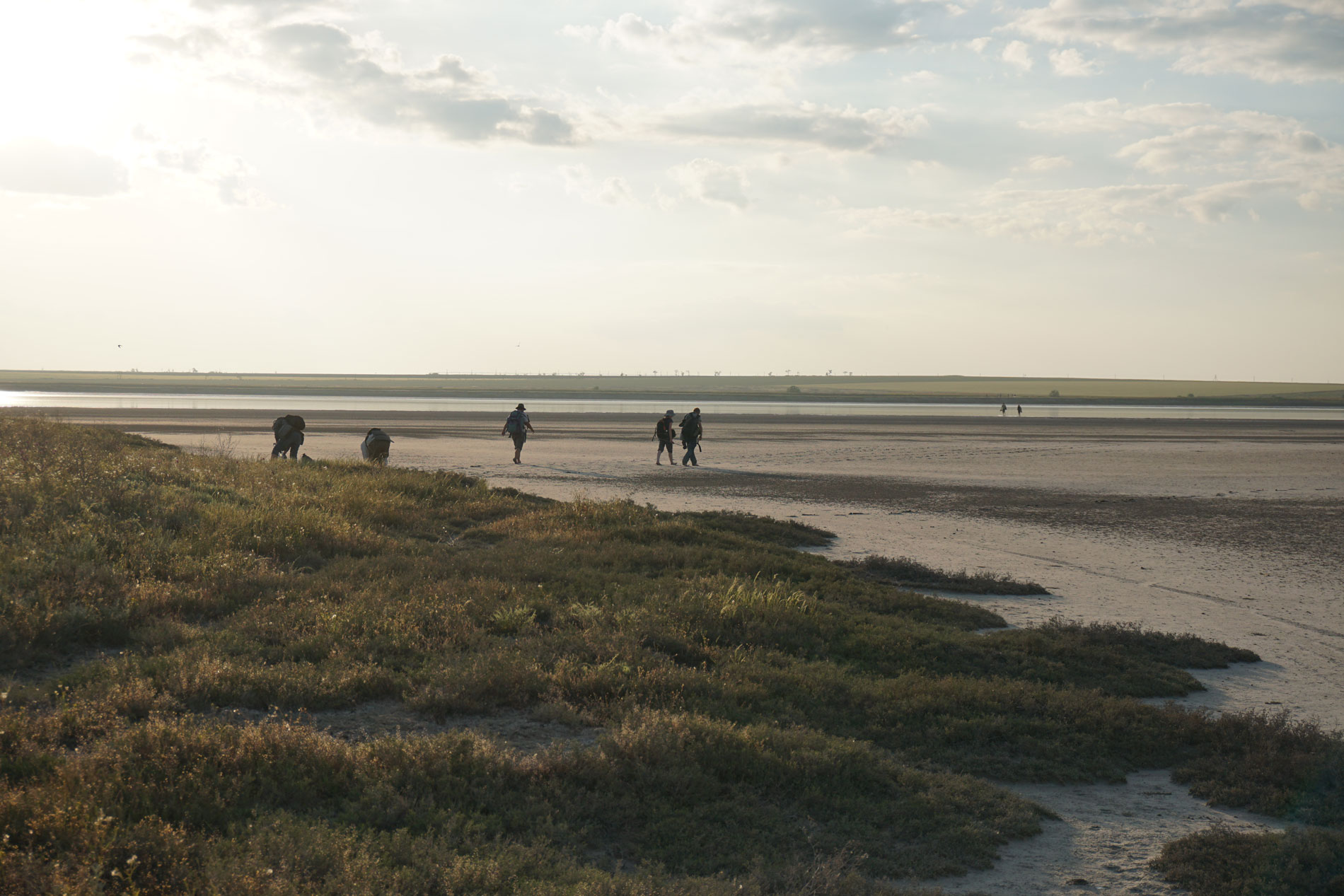A report by Oksana Buzhdygan (FU Berlin), Dariia Borovyk (FU Berlin, National Academy of Sciences of Ukraine), and Anna Kuzemko (National Academy of Sciences of Ukraine, F.E. Falz-Fein Biosphere Reserve «Askania Nova»)
Grasslands rank among the Earth’s most species-rich habitats, often exceeding tropical forests in plant diversity at fine spatial scales. In Ukrainian steppe grasslands, up to nine species of vascular plants per cm2 have been found, raising fundamental ecological questions: How can so many species coexist in such limited spaces? What governs the spatial variability of species composition across different grassland habitats? To tackle these questions, an international team of scientists from Ukraine and Germany joined forces in the iDiv project sCaleGrassDiv. The project explored how plant diversity changes across spatial scales, from tiny plots (1 cm2) to larger quadrats (100 m2), shedding light on the factors and mechanisms shaping grassland plant communities.
To address the scale-dependency of biodiversity across different grassland habitats, spatially explicit high-quality and consistently sampled data are required. The materials that formed the basis of this project started being collected in Ukraine in 2010 by the international Eurasian Dry Grassland Group (EDGG) during a field workshop. Further data were collected in 2015, 2017-2022, covering all natural zones of Ukraine – in the Carpathians, Polissya, Forest-Steppe, and Steppe. In 2022, after the full-scale invasion of Ukraine by the Russian Federation, field sampling was no longer possible in almost all of the country. During that time, Oksana Buzhdygan (then living in Berlin) and Kyiv-based data team leader Anna Kuzemko sought opportunities to create a safe and stimulating environment for Ukrainian scholars and to analyse the collected data at a high scientific level.
Sampling of saline bunchgrass steppe in the Valley of Kurgans, Kherson Region, May 2021.


Field work at the shore of Syvash Lake and Zelenovsky Island, Kherson Region, May 2021.
When they approached Jonathan Chase (group leader at iDiv and professor at Martin Luther University Halle-Wittenberg), a leading expert in the scale-dependency of biodiversity, he warmly welcomed the collaboration and offered to host the sCaleGrassDiv working group at iDiv. The funding by iDiv’s synthesis centre sDiv made it possible to organise a series of in-person workshops in Leipzig that brought together German and Ukrainian scholars. These meetings at iDiv in Leipzig reunited Ukrainian scholars scattered across Europe due to the war and provided them with a much-needed environment of stability, focus, and scientific exchange.
This collaboration has led to a series of manuscripts in development, with the first paper recently published in Ecology and Evolution: “Scale-Dependent Effects of Plant Diversity Drivers Across Different Grassland Habitats in Ukraine” (link). This study reveals that the factors influencing plant diversity vary across spatial scales and explains the mechanisms underlying this scale dependency. These findings challenge the traditional assumption in vegetation sampling that the same environmental factors shape plant diversity across different grain sizes, emphasising the need to consider multiple spatial perspectives when studying biodiversity.
However, this research tells a story far beyond scientific discovery – it is also a story of resilience. While much of the fieldwork was conducted before Russia’s full-scale invasion of Ukraine in 2022, the war has since cast a long shadow over Ukrainian science. Many long-term monitoring sites have become inaccessible, and Ukrainian scholars now struggle with displacement, safety concerns, and the immense challenge of sustaining research under extreme conditions. Some researchers continue their work amid constant uncertainty, while others have been forced to leave their homes and institutions. Many families remain separated by war, such as Anna Kuzemko’s husband and son, who were mobilised into the Ukrainian army.
Beyond the immediate project, the meetings at iDiv helped foster lasting collaborations that extend far beyond the original scope of sCaleGrassDiv. Despite all hardships, the sCaleGrassDiv collaboration stands as a testament to the power of international scientific partnerships. It underscores the importance of preserving unique ecosystems ‒ not just for biodiversity but also as part of the cultural and natural heritage of Ukraine. The data collected before the war now serve as a critical record of biodiversity, offering a baseline against which the environmental impacts of the war can be assessed and providing a foundation for future ecosystem restoration efforts.
Original Publication
(Researchers with iDiv affiliation bolded)
Oksana Buzhdygan, Selina Baldauf, Dariia Borovyk, Denys Vynokurov, Emma Ladouceur, Olha Chusova, Svitlana Iemelianova, Vasyl Budzhak, Britta Tietjen, Olga Bezrodnova, Olesya Bezsmertna, Illya Chorney, Iwona Dembicz, Jürgen Dengler, Yakiv Didukh, Monika Janišová, Oleksandr Khodosovtsev, Oksana Kucher, Ivan Moysiyenko, Alla Tokariuk, Iuliia Vasheniak, Olena Yavorska, Jonathan Chase, Anna Kuzemko (2025). Scale-Dependent Effects of Plant Diversity Drivers Across Different Grassland Habitats in Ukraine. Ecology and Evolution, DOI: 10.1002/ece3.70941
Contact
Oksana Buzhdygan
Theoretical Ecology
Freie Universität Berlin
Email:oksana.buzh@fu-berlin.de
Dariia Borovyk
Theoretical Ecology
Freie Universität Berlin
National Academy of Sciences of Ukraine
Email: borovyk@zedat.fu-berlin.de
Anna Kuzemko
National Academy of Sciences of Ukraine
F.E. Falz-Fein Biosphere Reserve «Askania Nova»
Email: anyameadow.ak@gmail.com
Kati Kietzmann
Media and Communications
German Centre for Integrative Biodiversity Research (iDiv) Halle-Jena-Leipzig
Phone: +49 341 97 39222
Email: kati.kietzmann@idiv.de
